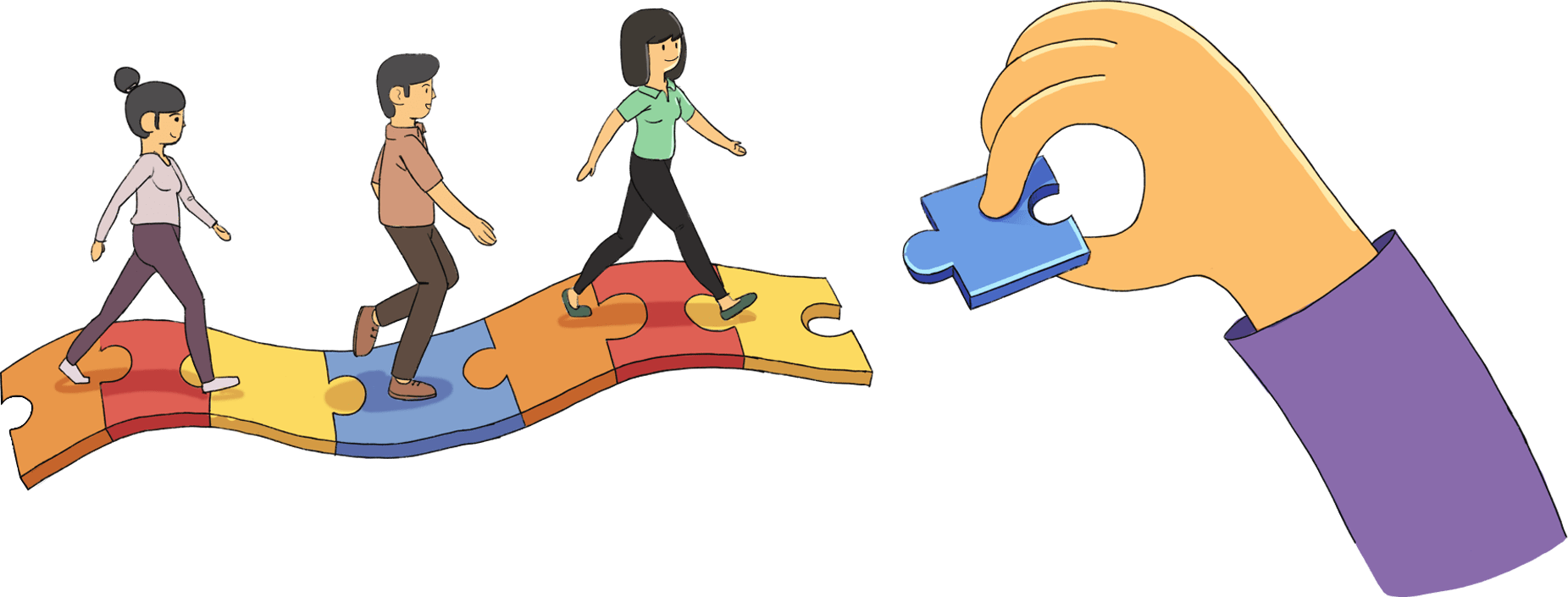
Last week union minister Ravi Shankar Prasad announced the government’s intent to amend the Protection of Children from Sexual Offences or POCSO law with changes like the death penalty to those convicted of raping children under 12 years.
The amendments aim to address a situation that is dire on the ground — nearly 300 children get sexually abused every day in India, according to national crime statistics.
The proposed changes to the law, however, have changed little for a certain P******7, an Indian user who shares child porn content on a WhatsApp group called Dil ** ** or even for a person with the handle **** Kumar, a participant in a group named Young **** *** *. The description of Dil ** ** is self-explanatory. It says: “Only small girls and boys sexy video send”.
FactorDaily has redacted the names of groups and usernames in line with an ongoing enquiry. The images have been morphed for this reason and keeping in mind reader sensitivities.
Facebook-owned WhatsApp messenger has been facing a global backlash for doing little to contain the use of the platform to spread child pornography. In December, Techcrunch reported third-party apps that offer invite links to join WhatsApp groups of users trading images of child exploitation. The report was based on the findings of two Israeli NGOs.
Nitish Chandan, founder, The Cyber Blog India, and project manager at Cyber Peace Foundation, who followed up the report to check the spread of such use in India, says that he found that the problem is likely huge in India based on preliminary research.
“There are at least 50 WhatsApp groups I found within four days to which hundreds of Indian users are subscribing and sending child sexual abuse material on,” he says.
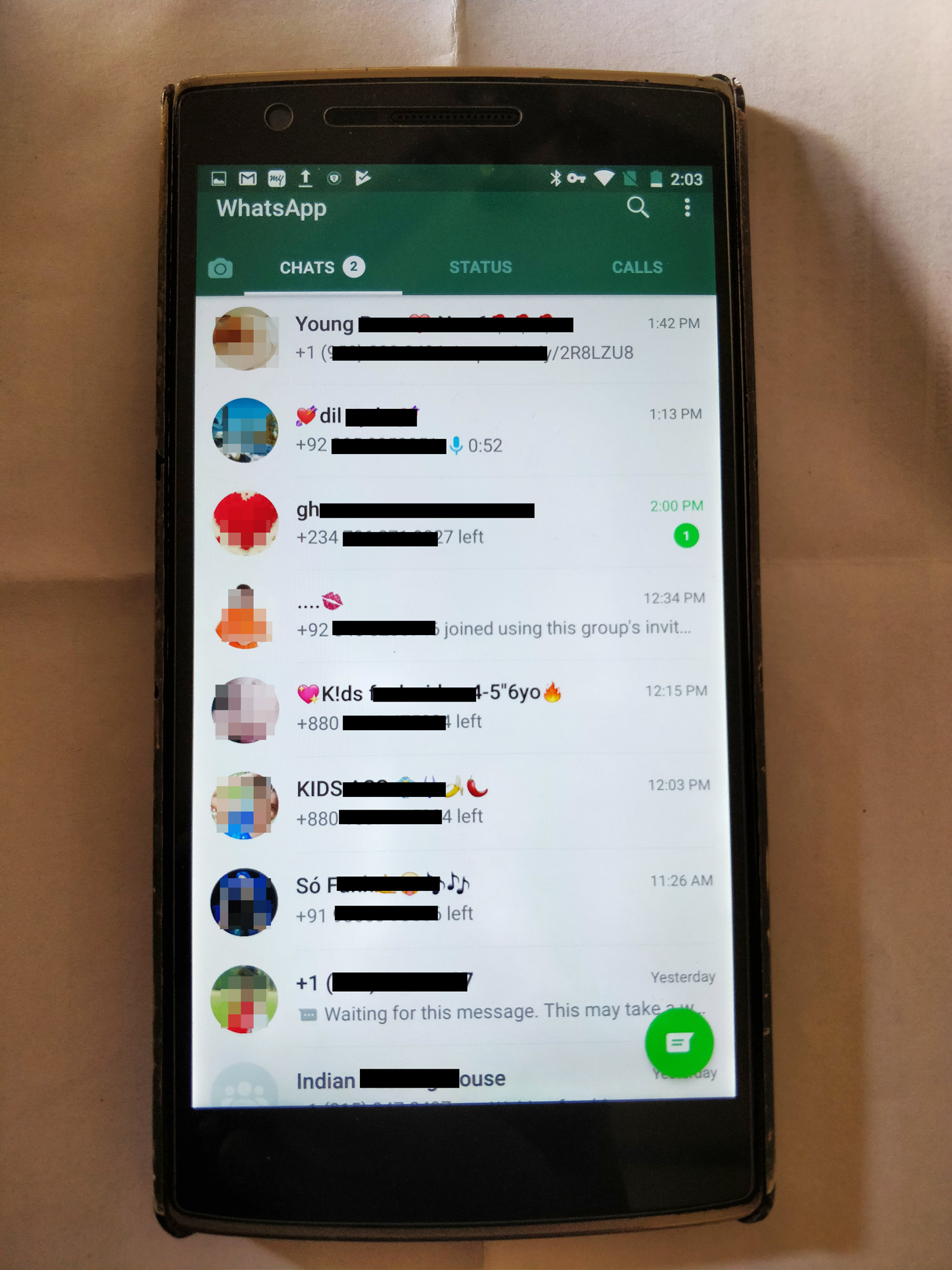
Getting into these rings is simple if you don’t care about the consequences of getting caught. It’s possible for anyone with an internet connection and a WhatsApp account to Google the many apps that provide links to join these WhatsApp groups. Download the app and join the groups in a single click.
“It’s not even on the dark web or anything, it’s on the regular platforms that most of us use every day,” says Chandan.
WhatsApp said a joint effort with technology companies was needed. “WhatsApp has a zero-tolerance policy around child sexual abuse. We deploy our most advanced technology, including artificial intelligence to scan profile photos and actively ban accounts suspected of sharing this vile content. We also respond to law enforcement requests in India and around the world,” a spokesperson said on email in response to an email from FactorDaily. “Sadly, because both app stores and communications services are being misused to spread abusive content, technology companies must work together to stop it.”
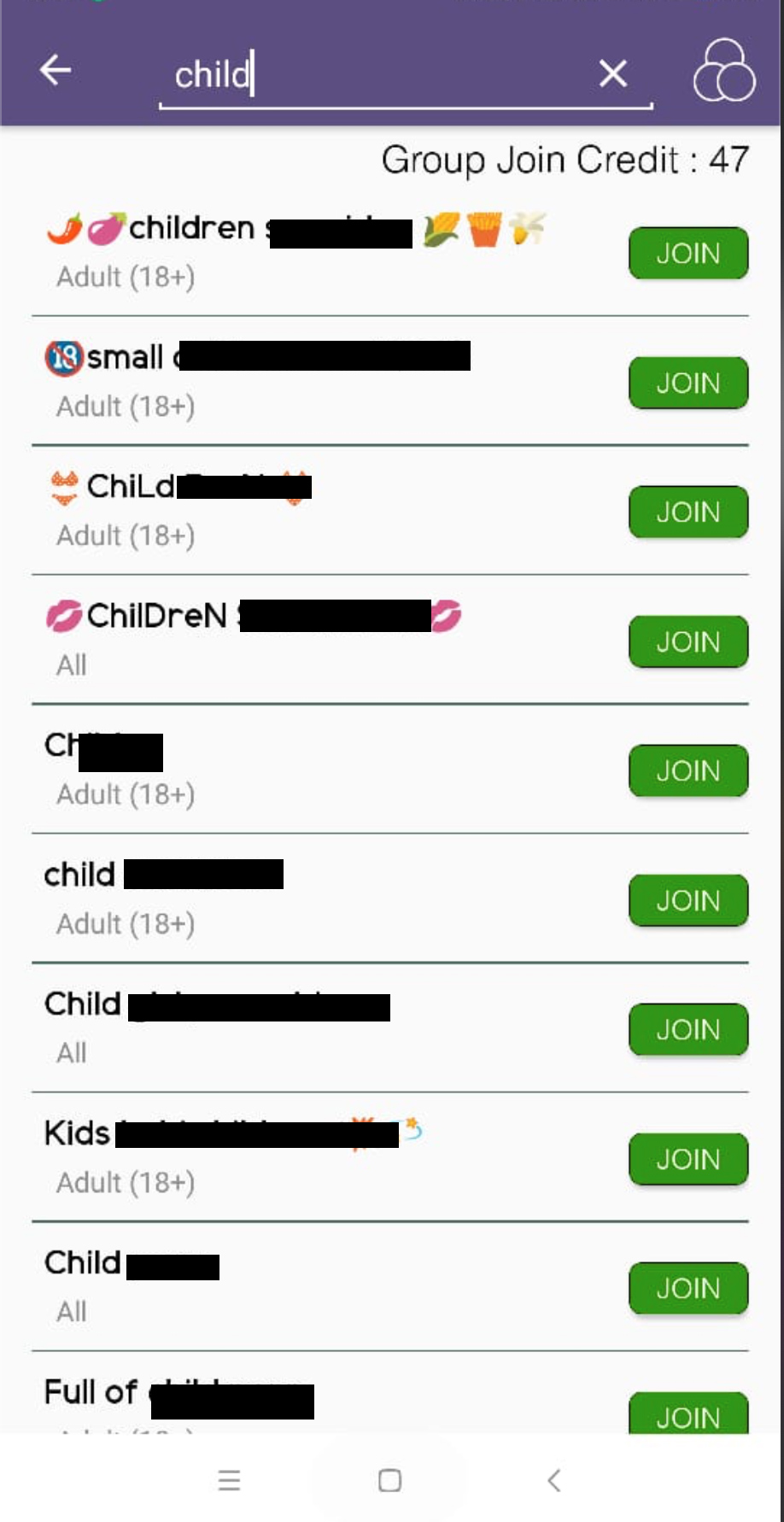
Possession of child pornography is a criminal offence in India. But access to such content had never been easier. If it wasn’t enough that social and video apps such as Kwai and LIKE are filled with content featuring girls as young as five, there are thousands of WhatsApp groups spreading pornographic videos of underage children.
[Read our story on How micro video apps like Kwai ignore inappropriate content of underage girls on their platform]
WhatsApp groups with names like Kids **** ***** 4-5-6 **, Kid’s ***, Gay kids *** ****, cool child **** ***** are rife with Indian users and content.
Chandan sent FactorDaily screenshots of some of these groups. To validate and review this content, I got into some of these WhatsApp groups on an old, unused Android phone, using a virtual number on a VPN connection. In the 24 hours that I spent reviewing content on some of these WhatsApp groups, I came across multiple videos and images that are shocking – images of children’s private parts, young girls and boys with older men and women or physical abuse of babies, for instance.
Around late afternoon on Saturday, a WhatsApp user with name ram****kar*** sends a video on a WhatsApp group titled S**** YAR****. The 23-second long video clip has the thumbnail showing a toddler’s head. It’s not porn. It’s a video of a man slapping the toddler’s head, the baby bawling in response. The man’s hand moves to another baby and the gruesome slapping and wailing continue. He then drops off the baby and it lands on the floor in a thud. The video cuts off there.
Next morning, in another group, called l**e there is an extended version of the video getting slapped. The baby is lying on the floor with a spot of blood next to it. It cuts off to the man now choking the toddler as it screeches, shaking vigorously.
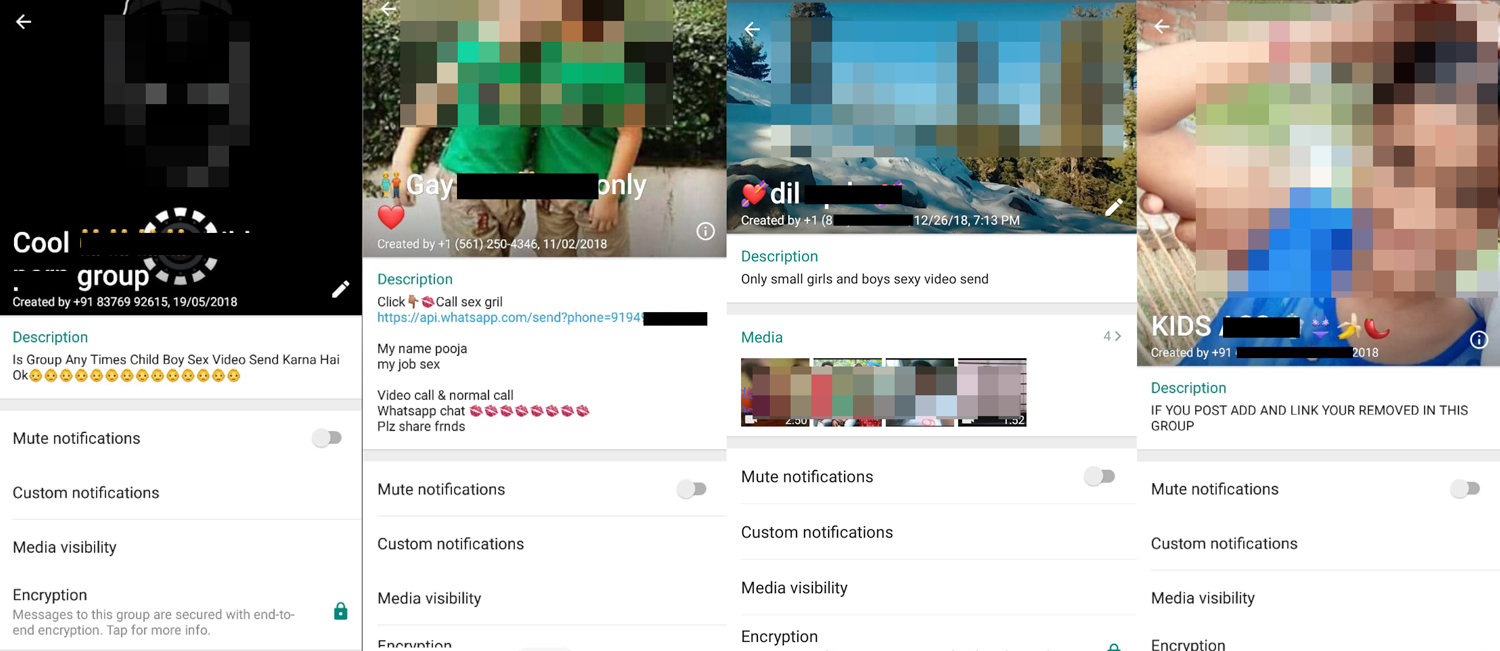
There isn’t a whole lot of communication in these groups. It’s usually someone requesting for an “XXXvideo” or requesting for child porn content. A new user on S**** YAR**** is precise in what he wants. His three one-word messages read: Send, Child, Porn. There are some audio messages of users abusing each other in Hindi. Many of these groups have over 100-150 users including users that have Indian numbers.
Chandan who also monitored some of these WhatsApp groups says that a certain user sent six video clips of child sexual abuse after another user requested for it on a group. In one of the videos, a girl, not more than 10 years old is being abused. The man in the video looks like in his thirties. Both don’t have any clothes on. There’s another man’s voice on the video; presumably he’s filming them. The man with the girl says something in Hindi which makes the young girl laugh. The man then penetrates the girl.
“What was more disturbing was that the girl child looked happy and was laughing. She is probably not aware of what it means,” says Chandan, adding that he has reported this and other such videos to the cybercrime portal of the ministry of home affairs, who are generally active and quick to respond to such complaints.
India has witnessed a massive surge in data use by mobile phone users in the last two years. The country is now adding close to 10 million daily active internet users every month, the highest rate of addition to the internet community anywhere in the world. Video platforms such as YouTube, Bigo Live and others, as also chat platforms such as WhatsApp, ShareChat, and Messenger, are popular destinations for data newbies.
As of early 2018, WhatsApp had reached 200 million monthly active users in India.
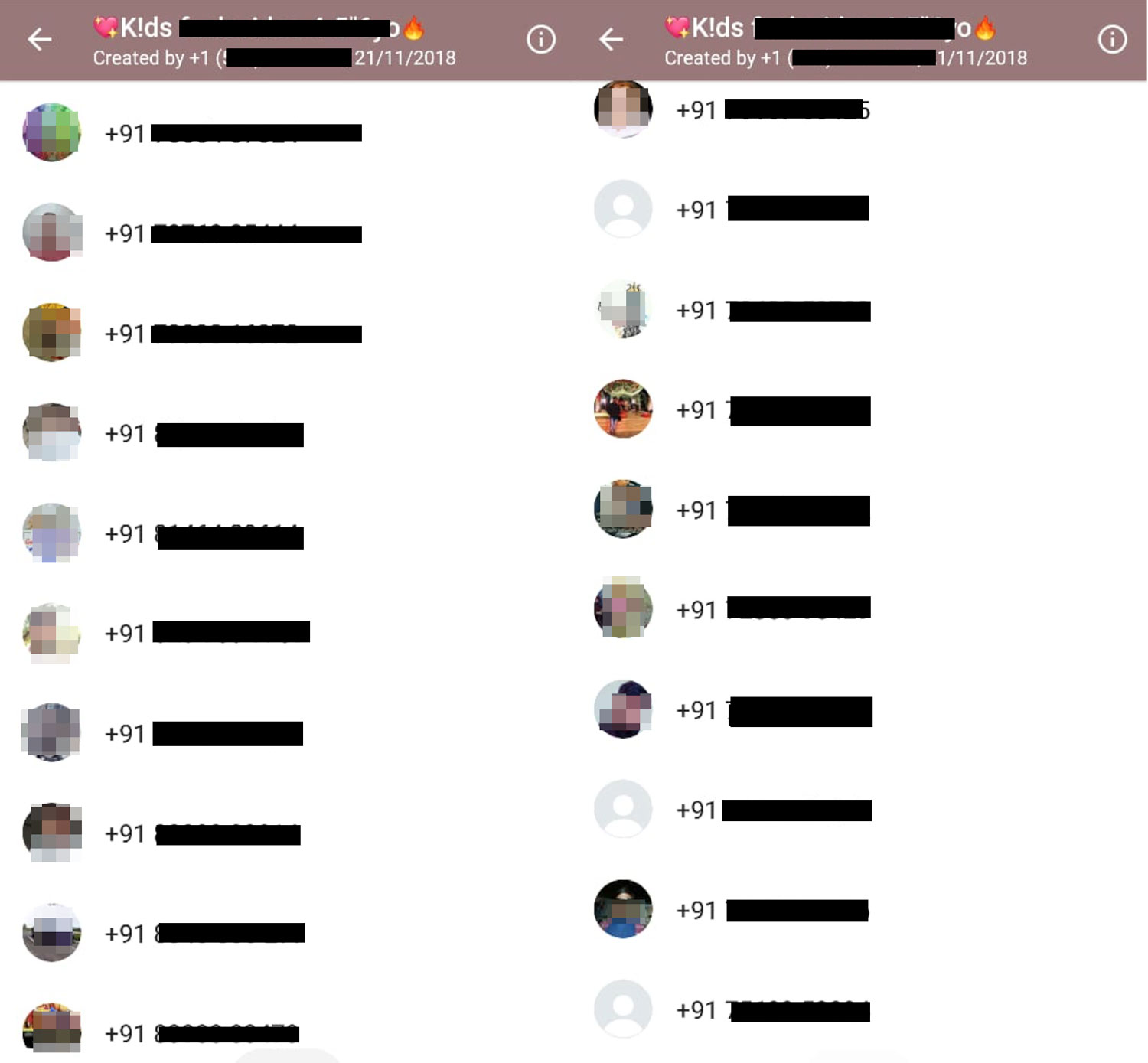
The numerous how-to videos on YouTube is telling of the hunger for video. For example, after an app called Vidmate that lets users download YouTube videos was taken down from Google Playstore, hundreds of videos emerged on YouTube on how to download Vidmate using the Android Package from Vidmate’s website.
The fact that Google took down several apps from Playstore that offered links to child porn groups after Techcrunch reported the story in December changes very little for consumers who are constantly finding other ways to download these apps.
WhatsApp introduced an invite link feature for groups in 2016, making it easier to discover and join groups without knowing any members of it. A simple Google search will land you apps that offer to aggregate and facilitate links to join WhatsApp groups.
However, the company might not be equipped to police its platform that is moderated by its own 300 employees and not Facebook’s 20,000 dedicated security and moderation team.
The platform’s end-to-end encryption doesn’t make it any easier to moderate or trace the origin of problematic content.
Social and video platforms, including ones such as Kwai, LIKE and Viva Video where such videos are probably created and posted first, have higher visibility but come with some amount of moderation. For example, the child beating video which is now being circulated in the child porn groups on WhatsApp has a Viva Video signature on it. The video was likely taken down by the moderation team at Viva Video, but that doesn’t stop it from doing rounds on the encrypted WhatsApp.
Rajeev Chandrasekhar, Member of Parliament in the Rajya Sabha suggested that in order to contain the growing menace of child abuse on digital platforms, amendments should be made not just in the IT Act but also the POSCO act. The amendments must clearly define the crime of Digital Child Abuse of Children & Online Child Grooming and create a permanent institutional framework to monitor and regulate online content that falls under the category of Digital Exploitation of Children.
“I am a vocal advocate of the benefits of digital India and the increasing use of technology in governance and democracy,” Chandrasekhar said in an email response to FactorDaily. “However, we should be aware there are ugly and negative uses of the internet that government and regulators should be proactive about. Government and Regulators must be ahead of the curve instead of lagging it.”
In a response to the TechCrunch report, WhatsApp parent Facebook provided a statement that said, “WhatsApp does not provide a search function for people or groups – nor does WhatsApp encourage publication of invite links to private groups. WhatsApp regularly engages with Google and Apple to enforce their terms of service on apps that attempt to encourage abuse on WhatsApp. Following the reports earlier this week, WhatsApp asked Google to remove all known group link sharing apps. When apps are removed from Google Playstore, they are also removed from Audience Network.”
A week later, the groups and the audience continue to thrive.